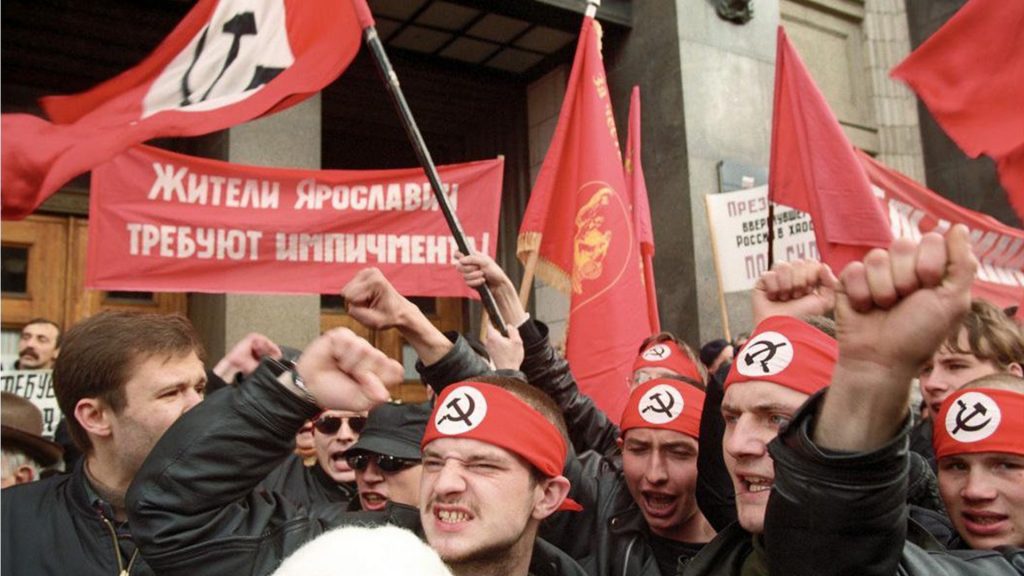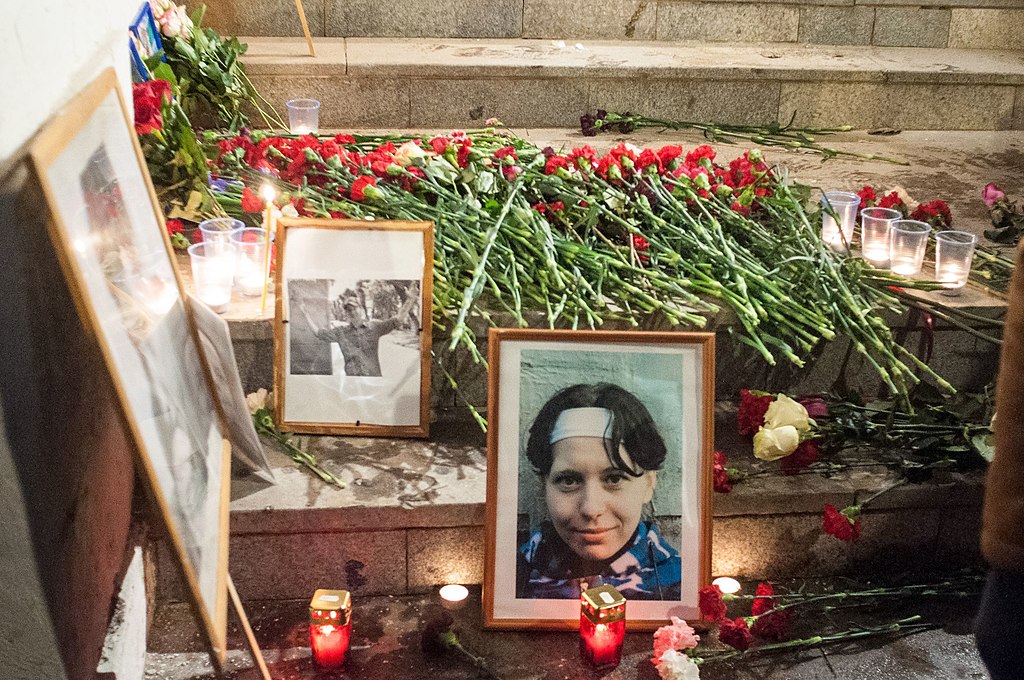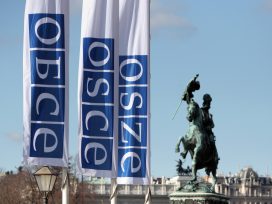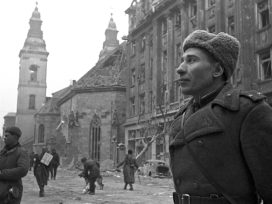A question may bе raised as to why, if we wish to explore new resources for combating fascism, we do not give as much attention to the ‘potential antifascist’. The answer is that we do study trends that stand in opposition to fascism, but we do not conceive that they constitute any single pattern. It is one of the major findings of the present study that individuals who show extreme susceptibility to fascist propaganda have а great deal in common. … Individuals who are extreme in the opposite direction are much more diverse.
T.W. Adorno, Else Frenkel-Brunswik, Daniel J. Levinson, R. Nevitt Sanford, The Authoritarian Personality (1950).
Part historical reference, part slur, ‘fascism’ is part of the political lexicon across the globe: a staple of punditry and online flame wars from China to Chile. This is not quite so for ‘antifascism’, which even more than its counterpart carries very different weight in different political cultures.
In the US and the UK, the term ‘antifascism’ has been marginal to political discourse and comes with comparatively little baggage. As a result, it now appears attractive as a catch-all for all those opposed to what they perceive to be fascist movements and ideas. But across western Europe and Latin America, the term immediately conjures up a specific leftwing tradition, rooted in the interwar era but kept alive by subsequent generations of political parties and intellectuals who saw their post-war engagements as a continuation of the antifascist struggle. Anyone raising the banner of antifascism in these places today will inevitably evoke a cluster of associations.
On one understanding of the term, the matter is straightforward. Fascism constitutes a clear and present danger that leaves no room for ambivalence or compromise. Antifascists are those who recognise fascism’s nature and the threat it poses. To call someone an antifascist is to give them the stamp of approval: here is a person who has their political priorities straight, whatever else we may disagree on. Employed across the leftwing spectrum, this understanding of antifascism undergirded the Popular Front efforts of the 1930s. But it also contributed to their collapse, as different groups accused each other of misunderstanding or wilfully obfuscating the true nature of fascism and its threat, and thus of not being antifascist enough.
On the other side are those who see the terminology of antifascism as no more than a cynical device used by communist regimes to eliminate dissent against state socialism. Proponents of this viewpoint refer to the Soviet Union’s overt cooperation and secret pacts with Nazi Germany until 1941, and to state antisemitism across the Soviet bloc from the mid-1940s onwards masquerading as anti-Zionism or indeed antifascism.
The German Democratic Republic, a self-described antifascist state, has been at the centre of acrimonious debate between adherents of these two perspectives. After the GDR’s demise in 1990, the Federal Republic’s efforts to come to terms with Germany’s Nazi past were routinely described as ultimately more successful than East Germany’s top-down antifascism, which critics alleged was intended to mask not only the socialist regime’s own crimes but also the presence of former Nazis in a state apparatus supposedly run by former resistance fighters. In recent years, there have been some attempts at a partial rehabilitation of East German antifascism. For example, Susan Neiman has argued that GDR antifascism was more than just a hollow ideological vehicle, and that its values were shared even by political dissidents.
This controversy is ultimately defined by irresolvable questions of authenticity: has there ever been a true antifascism, and if so, who can claim to own it? Notably, it also tends to ignore the experience of those countries – especially the post-Soviet and post-Yugoslav states – where antifascism has been so integral to official political discourse that any mention of it immediately enmeshes the user in a thick web of dominant, subversive and ironic meanings.
The USSR’s leadership, of course, more or less explicitly claimed to legislate for the entire world what could constitute antifascism. But the very dominance of antifascist discourse and certain cultural representations of fascism bred a whole range of alternative versions. Untangling these post-Soviet semantics can help contextualize types of antifascist language that tend to strike outside observers as bizarre, from Kremlin discourse about a ‘fascist junta’ in Kyiv to Russian liberals’ calls in the 1990s for an antifascist Pinochet.
But more than that, it can also help us better grasp phenomena such as the supposedly ironic fascism of the US alt right. And it can contribute to a transnational conversation about the complexities of antifascism – between those who think that the term can serve as a rallying cry against the likes of Bolsonaro, Modi or Trump, and those who believe it carries too much baggage to serve any progressive purpose.
Subverting official antifascism
Soviet official antifascism during the Nazi–Soviet war was epitomized by the five central Antifascist Committees created by the Stalinist leadership in 1941 to drum up international support. These committees serve as perfect examples of the purely instrumental nature of Soviet antifascism. In a formula that would enter Communist orthodoxy, the Bulgarian communist Georgi Dimitrov had defined fascism in 1935 as ‘the open terrorist dictatorship of the most reactionary, most chauvinistic, and most imperialist elements of finance capital’. In practice, however, the Committees were not guided by this or any other official definition, but by the need to ensure foreign support for the USSR’s war effort.
At the same time, the Committees were by no means identical clones or mere cogs in a machine. The Jewish Antifascist Committee’s efforts to document the Holocaust were thwarted when the Black Book it compiled was prevented from being published in the Soviet Union and most of its leaders murdered or imprisoned in Stalin’s post-war antisemitic campaign. In contrast, the All-Slavic Committee harboured a number of pan-Slavists and Russian nationalists who mined traditions of pre-revolutionary pro-Russian sentiment in central and southeastern Europe for elements that could be used to buttress Russian influence during and after the war.
Variations such as this notwithstanding, official Soviet uses of the term ‘fascism’ during the war and especially in the post-war decades followed a clear logic. The Soviet regime did not identify fascism by a stable set of characteristics, be they defined by Dimitrov’s formula or any of its later versions; nor was ‘fascism’ a random term of abuse. Rather, its meaning was relational: it designated either those considered to be the Soviet Union’s most prominent or hostile enemy in any given context, or else those who could be presented as heirs to Nazi Germany, the ultimate aggressor. Tito, the ‘Zionists’, rebelling East German workers and ‘West German revanchists’ – all were at one time or another designated as ‘fascist’. Yet Mussolini, the original fascist, was hardly ever labelled as such.
In common parlance, ‘the fascists’ were simply the enemy, which is why young people earnestly or semi-ironically rebelling against official ideology often resorted to ‘fascist’ symbols, as those most likely to shock. Such cases are documented as early as the 1930s, but the phenomenon became particularly widespread in the 1970s. By that time, the cult of the Great Patriotic War had become ubiquitous, spawning mandatory rituals and countless books, films and TV series. This in turn led to more or less ironic appropriations, again especially among the young. These ranged from graffiti of swastikas or celebrations of Hitler’s birthday to a complex ironic appropriation that became known as stiob.
According to an influential definition by the anthropologist Alexei Yurchak, stiob ‘differed from sarcasm, cynicism, derision or any of the more familiar genres of absurd humour. It required such a degree of overidentification with the object, person or idea at which this stiob was directed that it was often impossible to tell whether it was a form of sincere support, subtle ridicule or a peculiar mixture of the two.’ One of the main objects of appropriation in the 1970s and 80s were the high-ranking Nazi officials portrayed in the most successful series in the history of Soviet television, Seventeen Moments of Spring.
This kind of semi-ironic fascism might be dismissed as a curious but inconsequential cultural phenomenon had it not directly informed what later became the most prominent political youth movement in 1990s Russia: Eduard Limonov’s National Bolshevik Party. Amalgamating ideas from the history of both leftwing and rightwing radicalism, the NBP was premised on the sense that both fascism and antifascism had become empty signifiers that could be subverted by exaggerated playacting. Yet, by overidentifying with the object of their erstwhile irony, they often became indistinguishable from it. Familiar from other post-socialist countries, this phenomenon anticipated developments that only came to the fore in western political cultures in the 2000s, when satirical news shows and Internet slang shaped a language in which to express political views while maintaining a sense of ironic detachment from politics.

National Bolsheviks at the State Duma during the impeachment of Boris Yeltsin in May 1999. Photo by V.F. Fedorenko
duma.gov.ru / CC BY via Wikimedia Commons
In Russia, stiob fascism eventually fed into political violence by radical rightwing youth groups, which although its perpetrators sometimes adopted a sardonic tone, was extremely real. It also informed the mix of deliberate obfuscation in the name of plural narratives and pervasive references to the ‘Great Patriotic War’ that has informed the Kremlin’s political lexicon in the Putin era. Since 2005, the presidential administration has launched a number of ‘antifascist’ projects against internal and external enemies, ranging from the liberal opposition to the ‘fascist junta’ in Kyiv, which have drawn on this mix.
Liberal antifascism
A very different thread in the history of Russian antifascism was also rooted in critical reactions to the official variety. Since the 1960s, veiled comparisons between ‘fascist’ Germany and the Soviet Union’s own regime had gained some currency among the liberal intelligentsia. During perestroika, the open emergence of Russian ultranationalist movements that had been tolerated or supported by the Soviet state gave rise to liberal antifascist associations. These were often premised on the idea that the two regimes were equally totalitarian and thus ‘fascist’. The emergence of a ‘red-brown’ coalition that brought together communists and nationalists opposed to President Boris Yeltsin appeared to validate their fears, which were often expressed in warnings of an imminent fascist coup. This stance was not quite as far-fetched as it sounds, given that antisemitism, ethnonationalism and the idea of Russia as a sacred empire were prominent in the pronouncements of the post-Soviet Communist Party, the largest opposition party at the time, not to mention many smaller groups. This prompted much talk of a ‘Weimar Russia’ scenario among Russian as well as western observers.
Throughout the 1990s, some of the largest and most vocal self-designated antifascist groups in Russia equated fascism with communism and espoused radical free-market views, although the scene of human rights defenders with which they overlapped was more circumspect. The analytical Marxist G.A. Cohen once described Marx’s conception of history as ‘obstetric’, in the sense that historical materialism was supposed to facilitate the birth of something that history was pregnant with. By analogy, one could say that liberal antifascists espoused an abortionist view: ‘the bitch that bore him is in heat again’, and unless decisive action was taken, a new Hitler would emerge in red-brown guise.
With some exceptions, these liberal antifascists typically petitioned the authorities to crack down, rather than trying to engage in direct action or build grassroots structures to counteract ultranationalism. Some even went so far as to call for Pinochet-style reprisals against the communists. While this might strike those outside Russia as particularly weird, it was not altogether out of step with the top-down way in which market liberalism was introduced in the country.
Movement or milieu?
Finally, starting in the 1990s, a new, larger and more youthful type of antifascism emerged across Russia. The DIY punk scene that developed rapidly throughout the 2000s was informed by anarchist ideas and soon became defined by opposition to the omnipresent neo-Nazi youth groups who routinely attacked punk concerts and other subcultural gatherings. In the larger cities they were joined by anarchists and other leftwing activists, for whom antifascism was first and foremost a political principle rather than a corollary of their subculture. These groups imported environmental concerns, antiracist ideas and campaigns such as Food Not Bombs from western and central Europe.
The older liberal antifascists mostly just talked, wrote and demonstrated (which did not prevent some of them getting murdered by neo-Nazis). The antifa kids fought back, leading to frequent street brawls and violent reprisals that left a number of them dead. All of this happened on a complex subcultural coming-of-age scene where conversions (former Nazis joining antifa groups) and cross-group relationships were not uncommon.
This new variety of Russian antifascism might appear to be indistinguishable from some of its counterparts in other countries. Its symbols, paraphernalia and terminology (e.g. ‘red & anarchist skinheads’) were certainly adapted from the West. Does this mean that, whatever the twists and turns of its history, antifascism eventually ends up in the same place, predetermined by a fascist threat that is also structurally similar across its manifold manifestations? Not quite.
For one thing, the scene-based antifascism, though it became widespread by the late 2000s, has never quite outgrown its subcultural setting. Its progressive politics are eclipsed by more patriotic interpretations of ‘antifascism’. Harking back to official Soviet uses but largely stripped of its internationalist overtones, this patriotic discourse retains its dominance through education and a stream of official pronouncements and WWII-themed pop culture. Although stiob, liberal and leftwing antifascisms are now established enough to have become recognisable phenomena, they have not dislodged Soviet antifascism from the mainstream. On the contrary, the recent memory wars about WWII have breathed new life into that rhetoric. Pitted against the governments of former Soviet republics or satellite states, the Russian leadership has tended to reserve the ‘antifascist’ label for those who are seen as supporting its own view of history.
Even the more progressive Russian antifascism remains defined by characteristic features of Russian society, especially the paramount importance of strong friendship ties. A comparison with Turkey illustrates this. In both countries, 19 January happens to be the day of remembrance for victims of ultranationalist violence: the murder of Turkish-Armenian journalist Hrant Dink in 2007 in Istanbul and of journalist Anastasia Baburova and lawyer Stanislav Markelov in 2009 in Moscow. But the day is marked in very different ways. In Turkey, Dink became a symbol of civic resistance to state-sponsored nationalism, with thousands displaying the slogan ‘We are all Hrant, we are all Armenians’. This was a movement that anyone could join, regardless whether they had any connection with Dink. In Russia, by contrast, the organizers of the – much smaller – annual commemorations never fail to stress their personal relationship with Baburova or Markelov, calling them ‘our friends and comrades’. In crucial ways, Russian antifascism is a milieu rather than a movement open to all.

Remembering Anastasia Baburova and Stanislav Markelov, Moscow, 19 January 2018. Photo by Dmitry Horov / CC BY from Wikimedia Commons
So what does the complex history of Russian antifascism tell us? At a basic level, that antifascism has always meant different things to different people. Some of its core strands were always associated with state socialism, and we cannot argue this away by labelling them as inauthentic or irrelevant. Yet nor can we dismiss antifascism altogether, simply because it has been used in manipulative ways.
But it can also serve to de-parochialize western discourses of antifascism. Prompted by perceptions of a neo-fascist revival, these are often governed by the impatient belief that antifascism is simply a common political denominator for a diverse coalition of groups who share few things beyond their opposition to aggressive ultranationalism. Seen from this perspective, the rich international history of antifascist movements is at best a resource to be mined for stories, figures and symbols. This approach has some justification. Yet in Russia and other post-socialist countries, the baggage attached to the concept weighs heavily on any attempt to organize against the radical right. History shows that both subversive irony and earnest critique are ripe with unintended consequences. An awareness of these differences is a precondition for turning the conversation about antifascism into a truly global dialogue.









